Step into the realm of rock ‘n’ roll history and uncover the enigma behind the legendary Chuck Berry’s electrifying sound. As a pioneer in the genre, Berry’s signature guitar riffs and captivating performances continue to echo through the ages. But what was the secret behind his mesmerizing guitar tone? What instrument did this musical icon rely on to create the unforgettable melodies that defined an era? Join this guide that will delve into the heart of Chuck Berry’s sonic universe and explore the guitar that served as his musical conduit to rock immortality.
What Music Did Chuck Berry Play?
Chuck Berry was an American singer, songwriter, and guitarist who is widely considered one of the pioneers of rock and roll music. Born in 1926 in St. Louis, Missouri, Berry grew up listening to blues and country music on the radio. He taught himself how to play guitar and began performing at local clubs and bars.
Berry’s unique style of playing combined elements of blues, country, and rhythm and blues into a new sound that became known as rock and roll. His energetic performances and catchy songs quickly gained popularity, making him one of the biggest stars of the 1950s.
Aside from his solo career, Chuck Berry also played an essential role in shaping the early rock and roll scene by influencing other musicians such as The Beatles, The Rolling Stones, and Elvis Presley. His music has been covered by countless artists and continues to be a source of inspiration for many musicians today.
In addition to his musical talents, Chuck Berry was also known for his energetic stage presence and iconic dance moves. He often performed his signature “duck walk” while playing guitar, which became an essential part of his act.
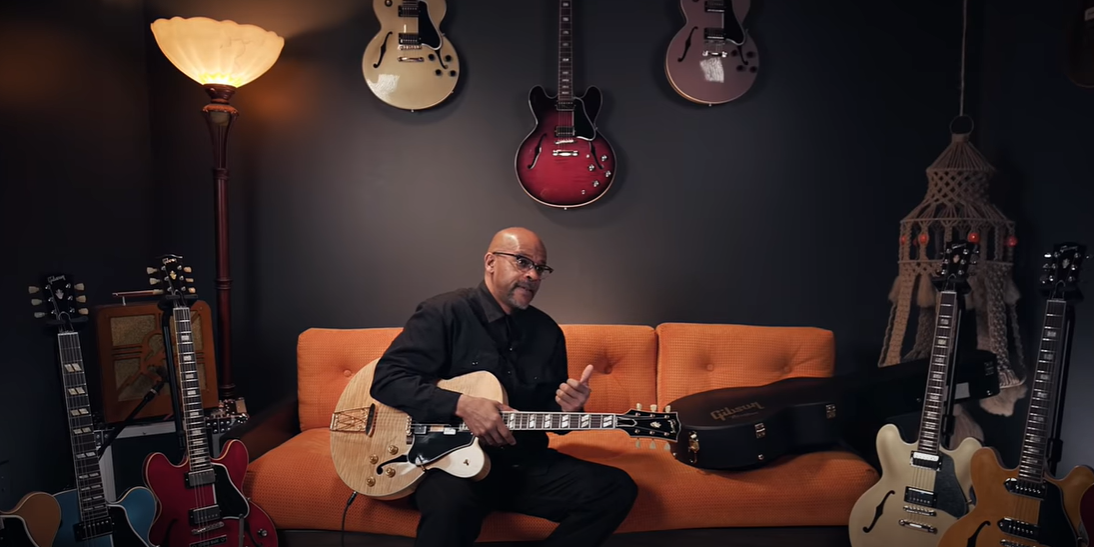
Despite facing some setbacks in his career, including legal troubles and a brief prison sentence, Chuck Berry’s music has stood the test of time. He was inducted into the Rock and Roll Hall of Fame in 1986 and received numerous awards and honors for his contributions to music.
In conclusion, Chuck Berry played a significant role in shaping the landscape of rock and roll with his unique blend of blues, country, and rhythm and blues. His influence can still be heard in modern music and his legacy continues to live on through his timeless songs.
What Guitar did Chuck Berry Play?
Gibson ES-355TD-SV
Chuck Berry was a legend, and his music still lives on to this day. He has been credited as one of the pioneers of rock and roll music, and his influence can be heard in countless songs by other artists. One thing that made Chuck Berry stand out was his unique guitar playing style. But what guitar did Chuck Berry play? The answer is the Gibson ES-355TD-SV.
The Gibson ES-355TD-SV, also known as the “Stereo Varitone”, was a semi-hollow body electric guitar that was first introduced in 1958. This guitar quickly became a popular choice amongst musicians and was even used by other well-known artists such as B.B. King and Freddie King.
So what made this guitar so special? For starters, it had a unique design and sound that set it apart from other guitars at the time. The ES-355TD-SV featured a maple body with a double cutaway design, giving it a sleek and modern look. It also had dual humbucker pickups, which provided a warm and full-bodied tone.
But perhaps the most notable feature of the ES-355TD-SV was its “Varitone” switch. This switch allowed for different frequency filters to be applied to the guitar’s signal, creating a range of unique sounds and tones. This feature was especially popular with Chuck Berry, as he used it to create his signature sound.
In addition to its technical features, the Gibson ES-355TD-SV also had a special meaning to Chuck Berry. He often referred to this guitar as his “guitar of choice” and used it extensively throughout his career, including on some of his most iconic songs such as “Johnny B. Goode” and “Roll Over Beethoven”.
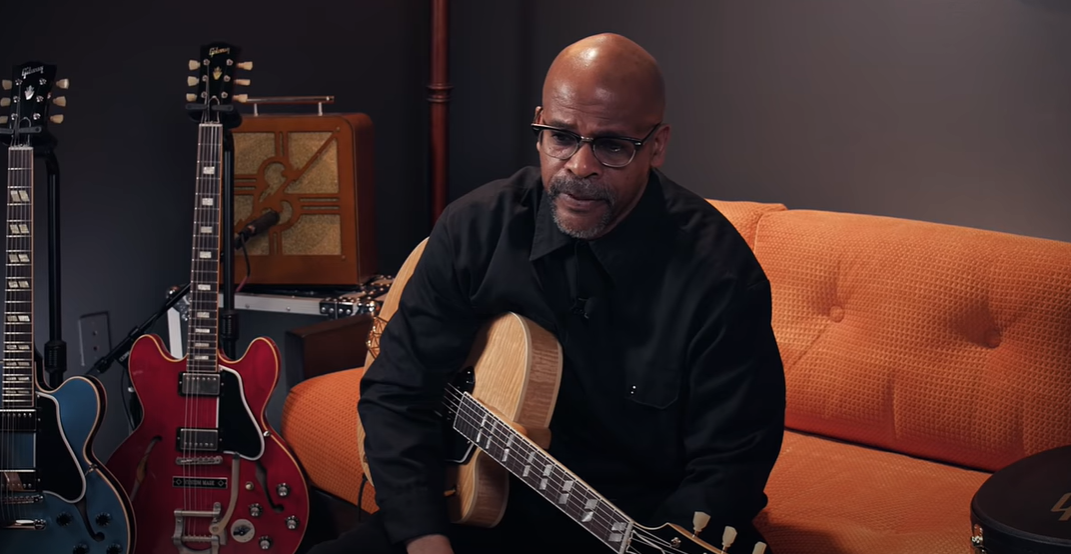
Gibson B.B King Signature Lucille
While the Gibson ES-355TD-SV was Chuck Berry’s guitar of choice, it was not the only guitar he played. In fact, towards the later years of his career, Berry switched to a different model – the Gibson B.B. King Signature Lucille.
The B.B. King Signature Lucille was developed in collaboration with blues legend B.B. King was based on his own custom Gibson ES-355. This guitar featured a similar design to the ES-355TD-SV, but with some notable differences such as a single cutaway and a “Fine Tune” tailpiece.
But what truly set this guitar apart was its sound. The B.B. King Signature Lucille had a more traditional blues tone compared to the ES-355TD-SV, which suited Berry’s evolving style as he incorporated more blues elements into his music.
There is no denying the impact that Chuck Berry had on music and guitar playing. While he may have had a preference for the Gibson ES-355TD-SV, he was also open to trying new things and experimenting with different guitars, such as the B.B. King Signature Lucille. Ultimately, it was his talent and unique style that made him a guitar icon, regardless of the instrument he played.
1955 Gibson “Maybellene” ES-350T
In addition to his signature guitars, Chuck Berry also had a special connection with another Gibson model – the 1955 “Maybellene” ES-350T. This guitar was given to him by Muddy Waters and was one of his most prized possessions.
The ES-350T had a similar design to the ES-355TD-SV but with a thinner body and a single P-90 pickup. This guitar became a staple in Berry’s live performances, and he even used it to record some of his early hits including “Maybellene” and “Roll Over Beethoven”.
In conclusion, Chuck Berry’s guitar of choice was the Gibson ES-355TD-SV, but he also had a special connection with other Gibson models such as the B.B. King Signature Lucille and the 1955 “Maybellene” ES-350T. These guitars not only played a crucial role in shaping his iconic sound but also hold a special place in the history of rock and roll music.
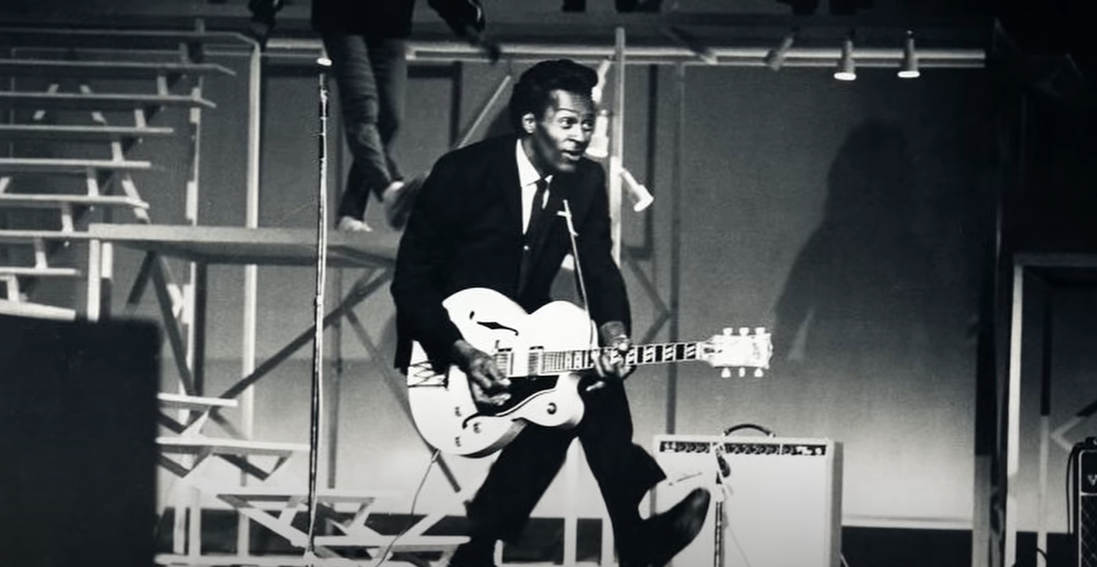
Gibson ES-335
While Chuck Berry may be most commonly associated with the ES-355TD-SV, he also had a notable connection to another legendary Gibson model – the ES-335.
The ES-335 was first introduced in 1958 and quickly became a favorite among musicians for its versatile sound and design. This semi-hollow body guitar featured dual humbucker pickups, similar to the ES-355TD-SV, but with a more compact and lightweight body.
Chuck Berry was known to have played the ES-335 on occasion, particularly during live performances. It is also rumored that he used this guitar on some of his recordings, although it is not as well-documented as his other guitars.
Nevertheless, the Gibson ES-335 remains an iconic and influential guitar in its own right, and its association with Chuck Berry only adds to its prestige. Whether he was playing his beloved ES-355TD-SV or experimenting with other models like the B.B. King Signature Lucille and the 1955 “Maybellene” ES-350T, Chuck Berry’s guitar choices were an integral part of his unique sound and legacy in the world of music.
1956 Gibson ES-350TN
Another notable Gibson model that Chuck Berry played was the 1956 ES-350TN, also known as the “Blonde One”. This guitar was unique in that it featured a blonde finish and a single P-90 pickup compared to the usual gold finish and dual humbuckers of other ES models.
Chuck Berry used this guitar extensively during his early career in the 1950s and it can be heard on some of his early recordings such as “School Day (Ring! Ring! Goes the Bell)” and “Rock and Roll Music”. The ES-350TN’s distinctive tone and design made it a perfect fit for Berry’s energetic style of playing.
Today, the 1956 Gibson ES-350TN is a highly sought-after vintage guitar, not only because of its association with Chuck Berry but also because of its unique features and sound. It is a testament to how influential and iconic Berry’s choice of guitars was in shaping the history of rock and roll music. With his signature Gibson models such as the ES-355TD-SV, B.B. King Signature Lucille, and “Maybelline” ES-350T, as well as his occasional use of other iconic Gibson models like the ES-335 and ES-350TN, Chuck Berry continues to inspire generations of guitarists and leave a lasting impact on the world of music.
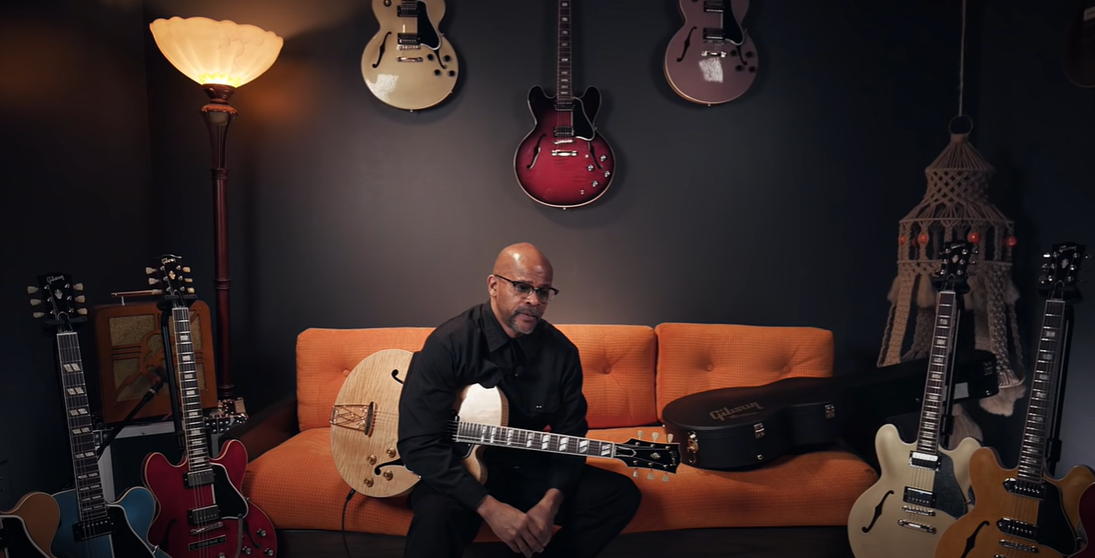
1959 Gretsch 6121 “Chet Atkins” Solid Body
While Chuck Berry is most commonly associated with Gibson guitars, he also had a brief but fascinating period where he explored the sonic possibilities of another iconic brand – Gretsch. In 1959, Berry’s curiosity led him to receive a custom-made Gretsch 6121 “Chet Atkins” solid body guitar, a remarkable instrument inspired by the signature model of country guitarist Chet Atkins. This exquisite guitar boasted a stunning single-cutaway design, equipped with dual Filter’Tron pickups for that distinctive Gretsch twang, and a Bigsby tremolo system for expressive vibrato.
With this unique instrument in hand, Berry took to the stage, captivating audiences with his electrifying performances. Though his time with the Gretsch 6121 was relatively short-lived, as he swiftly returned to his beloved Gibson ES-355TD-SV, the impact of this Gretsch gem on Berry’s musical journey and legacy remains indelible. The Gretsch 6121 stands as a testament to the versatility and exploration that defined Chuck Berry as a true pioneer of rock ‘n’ roll [1].
Chuck Berry’s Legacy
Chuck Berry was a legendary guitarist, singer and songwriter who is considered one of the pioneers of rock and roll music. His contributions to the genre have had a lasting impact on the music industry and continue to influence musicians today.
Berry was known for his energetic performances, skilled guitar playing and clever songwriting. He mixed elements from blues, country and R&B to create a unique sound that would go on to define rock and roll. His songs were filled with catchy guitar riffs, clever lyrics and infectious rhythms that captured the hearts of listeners. Berry’s music was considered rebellious at the time, appealing to both black and white audiences and breaking down racial barriers in the music industry.
Berry was known for his energetic and captivating live performances. He had a natural charisma and stage presence that drew in audiences wherever he performed. His famous “duck walk” became a signature move and added to the excitement of his shows.
Berry’s music continues to inspire new generations of musicians. His songs have been covered by artists such as Bruce Springsteen, AC/DC and Jimi Hendrix. He also received numerous awards and accolades throughout his career, including induction into the Rock and Roll Hall of Fame in 1986.
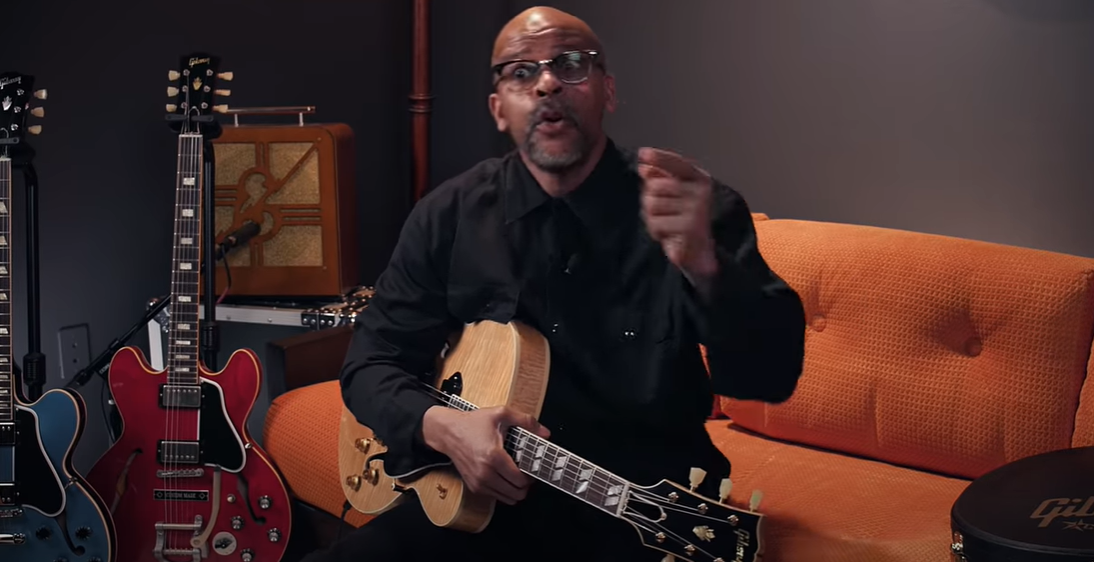
Despite facing challenges and setbacks throughout his life, Chuck Berry’s legacy lives on through his music. He will always be remembered as a trailblazer who helped shape rock and roll into what it is today. His impact on the music industry will be felt for generations to come.
Chuck Berry Amps Overview
Chuck Berry was a pioneer in rock and roll music, influencing countless artists with his signature guitar riffs and energetic performances. One of the key components of his sound was his use of amplifiers, which played a crucial role in shaping his tone and projecting it to large audiences.
In the early years of his career, Chuck Berry primarily used Fender amplifiers, specifically the Fender Bassman and Fender Deluxe models. These amps were known for their warm, clean tones and were commonly used by other rock and roll pioneers such as Buddy Holly and Elvis Presley.
As Berry’s career progressed and he began playing larger venues, he turned to bigger amps such as the Fender Twin Reverb and the Showman. These amps were able to handle larger crowds and provided more volume and power for Berry’s high-energy performances.
In addition to Fender, Berry also used amps from other manufacturers such as Gibson, Vox, and Marshall. These amps offered different tonal qualities and allowed Berry to experiment with his sound. He often combined multiple amps on stage to create a fuller and more dynamic tone.
One of the defining characteristics of Chuck Berry’s sound was his use of a tape delay effect, achieved through his use of an echo unit connected to his amps. This created a distinctive “slapback” effect that became synonymous with Berry’s guitar playing.
In later years, Chuck Berry continued to incorporate new amps and effects into his rig, including models from Mesa Boogie and Roland. However, he always maintained a fondness for his early Fender amps and often used them in studio recordings and live performances.
Today, the influence of Chuck Berry’s amp choices can still be seen in the gear preferences of many guitarists. His use of Fender amps in particular has become synonymous with the rock and roll sound and continues to be a popular choice among musicians [2].
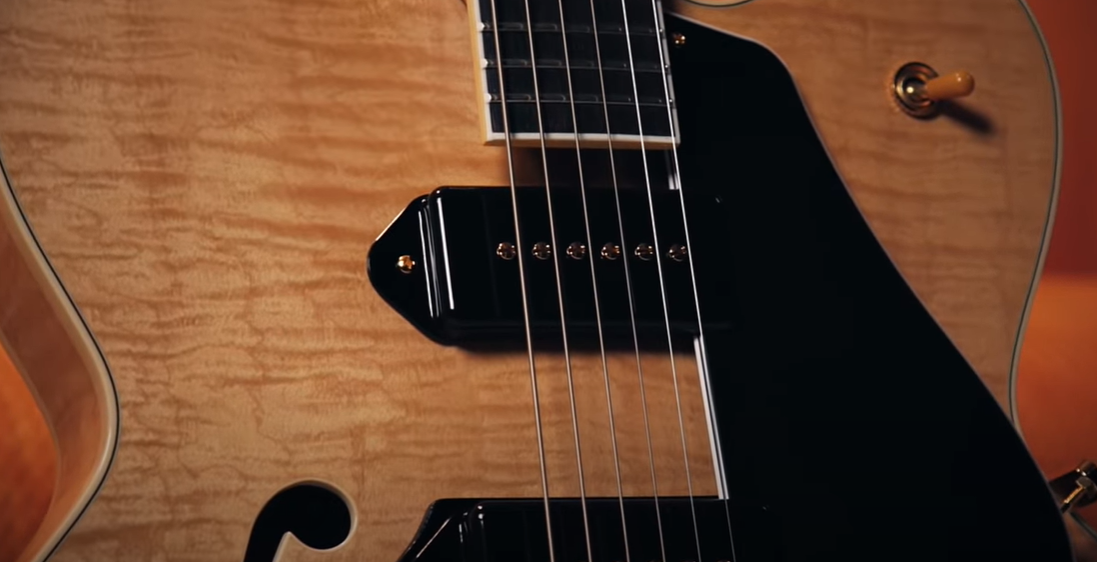
How to choose an electric and an acoustic guitar?
When it comes to choosing a guitar, there are two main types to consider: electric and acoustic. Each type has its own unique sound, feel, and purpose. If you’re in the market for a new guitar, here are some factors to consider when deciding between an electric and an acoustic.
The biggest difference between an electric and acoustic guitar is the way they produce sound. Acoustic guitars have a hollow body that amplifies the vibrations of the strings, creating a full and natural sound without needing any additional equipment. On the other hand, electric guitars require an amplifier to produce their sound. This means that you can manipulate the tone and volume of an electric guitar using different types of amps or effects pedals.
Another important factor to consider is the playability of the guitar. Acoustic guitars generally have thicker and heavier strings, which may be more challenging for beginners or those with weaker hands. Electric guitars, on the other hand, have thinner strings that are easier to press down, making them a popular choice for beginners. Additionally, electric guitars typically have a slimmer neck and body, making them more comfortable to hold and play for extended periods.
The type of music you want to play should also be taken into account when choosing between an electric or acoustic guitar. Acoustic guitars are often associated with folk, country, and singer-songwriter genres, while electric guitars are commonly used in rock, blues, and metal music. However, this is not a hard and fast rule, and both types of guitars can be used to play a variety of music styles.
Budget is another crucial factor when buying a guitar. Generally, acoustic guitars are more affordable compared to electric guitars. This is because an acoustic guitar only requires the instrument itself, while an electric guitar also requires an amplifier and other related equipment. However, there are still budget-friendly options for both types of guitars, so it’s important to do some research and find the best option within your budget.
Ultimately, the decision between an electric and acoustic guitar boils down to personal preference and what suits your playing style and musical preferences. If you are drawn to a specific type of music, it may be worth investing in the guitar that is most commonly used for that genre. However, if you’re a beginner or just starting to explore different styles of music, it may be beneficial to try out both types of guitars and see which one feels more comfortable to play [3].
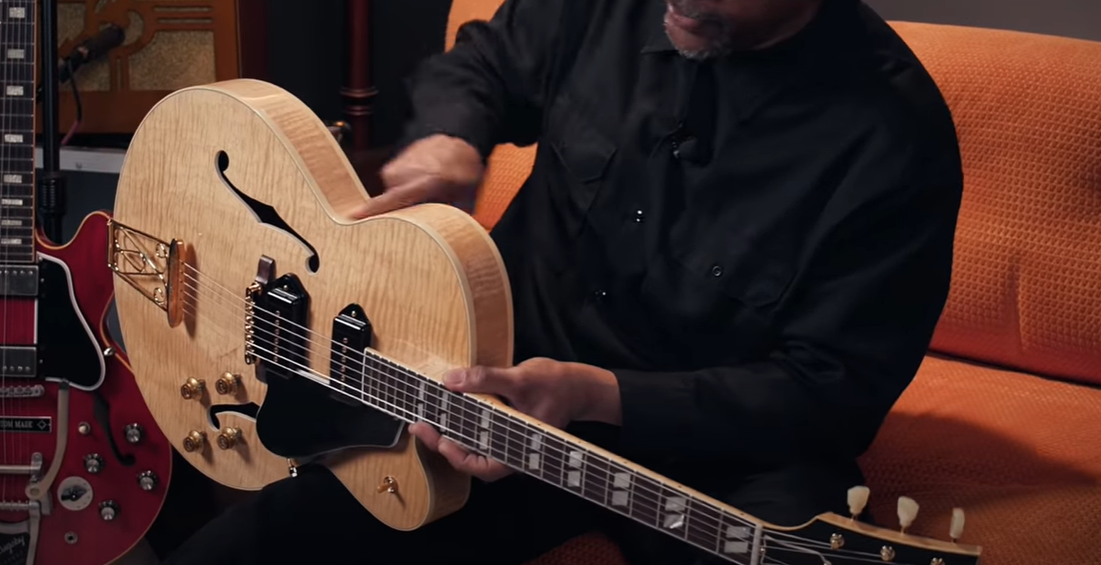
FAQ
What kind of guitar did Chuck Berry primarily play?
Chuck Berry, the legendary guitarist, was known for his iconic sound, primarily achieved through his beloved Gibson ES-350T semi-hollow electric guitar. This distinctive instrument, which he played with incredible skill, was even more special due to Berry’s modification. He added a Bigsby vibrato tailpiece, giving his guitar a unique and recognizable sound.
While the Gibson ES-350T was his main guitar, Berry was not limited to just one instrument. Throughout his illustrious career, he also occasionally showcased his talents on a Fender Telecaster and a Guild Starfire. These additional guitars provided different tones and textures, allowing Berry to expand his musical repertoire and captivate audiences with his versatility.
From the unmistakable sound of his modified Gibson to the occasional exploration of other guitars, Chuck Berry’s instrument choices were an integral part of his musical journey, contributing to his status as one of the greatest guitarists of all time.
What was Chuck Berry’s signature move on stage?
One of Chuck Berry’s most iconic moves on stage was the “duck walk.” This distinctive move involved Berry crouching down and shuffling across the stage in a duck-like manner while playing his guitar. It became synonymous with his performances, making him instantly recognizable to audiences.
The origins of the duck walk can be traced back to Berry’s childhood when he would mimic a shuffle dance performed by his mother. He later incorporated this into his performances and it became a signature move that audiences eagerly anticipated. The duck walk not only added an energetic flair to Berry’s live shows but also showcased his incredible showmanship and stage presence.
Even though Chuck Berry is no longer with us, his legacy lives on through his music and the iconic moves like the duck walk that he brought to the world of rock and roll. So, whenever you hear one of his classic songs, remember to do the duck walk in honor of the legendary guitarist. \m/
What did Chuck Berry call his guitar?
Chuck Berry had a special relationship with his guitar, so much so that he gave it a name – “Maybellene.” This name was borrowed from one of his biggest hits and was also inspired by the song “Ida Red” by Bob Wills. The lyrics in both songs refer to a woman named Ida Red, and Berry used this as inspiration for naming his guitar.
In addition to Maybellene, Berry also referred to his guitar as “TWO-BERRY” and “the Great 28.” These names were a nod to the fact that he played a Gibson ES-350T model with two pickups and 28 frets. Whether he called it by its name or these clever nicknames, Chuck Berry’s guitar was an extension of himself and his music, contributing to his iconic sound and performances.
Did Chuck Berry have any famous collaborations?
Chuck Berry was not only a legendary solo artist but also a collaborator extraordinaire. Throughout his career, he worked with many other musical greats, creating memorable and timeless music together. One of his most famous collaborations was with rock and roll pioneer Little Richard. The two artists joined forces in the late 1950s and toured together, sharing the stage and their electrifying energy with audiences.
Another notable collaboration was with Keith Richards of The Rolling Stones. Berry and Richards had a mutual admiration for each other’s music and worked together on several projects, including recording an album titled “Hail! Hail! Rock ‘n’ Roll” and performing together at major events like the Rock and Roll Hall of Fame induction ceremony.
What other instruments did Chuck Berry play?
While Chuck Berry is primarily known for his guitar skills, he was also proficient in playing other instruments. In addition to the guitar, he could play the piano and harmonica, adding depth and variety to his music.
Berry’s ability to play multiple instruments allowed him to experiment with different sounds and incorporate them into his songs. For example, he played the piano on hits like “Rock and Roll Music” and “Johnny B. Goode,” giving these songs a unique flavor that set them apart from other rock and roll tunes.
Chuck Berry’s musical versatility not only made him a pioneer in the genre of rock and roll but also showcased his talent as a musician beyond just the guitar. It is yet another testament to his legacy, which continues to inspire and influence generations of musicians.
Why is Chuck Berry considered the father of rock and roll?
Chuck Berry’s influence on the world of music cannot be overstated, earning him the title of “father of rock and roll.” He was one of the first artists to blend elements of blues, country, and R&B into his music, creating a new sound that would become known as rock and roll.
Berry’s innovative guitar riffs and charismatic stage presence laid the foundation for the rock and roll genre, inspiring countless musicians who followed in his footsteps. His songs also addressed relatable topics like teenage life, love, and rebellion, making him a voice for a generation.
Moreover, Berry’s impact on popular culture extends beyond just music. He was one of the first African-American artists to achieve mainstream success with a predominantly white audience, breaking down racial barriers and paving the way for other black musicians.
Useful Video: Chuck Berry 1970s Gibson ES-355
Conclusion Paragraph
Chuck Berry is known as the “Father of Rock and Roll”, a true pioneer in the music industry who broke barriers and redefined what it meant to be a musician. His contributions to rock and roll have influenced countless artists and continue to inspire generations. Berry’s unique blend of blues, country, and R&B created a sound that was entirely his own. He revolutionized guitar playing with his signature “duck walk” and his energetic stage presence set the standard for live performances. Berry’s most famous guitar is a Gibson ES-350, which he played throughout his career and is now on display at the Rock and Roll Hall of Fame.
References:
- https://www.guitarlobby.com/chuck-berry-guitars-and-gear/
- https://musicstrive.com/chuck-berry-guitar-tone/
- https://www.fender.com/articles/instruments/acoustic-or-electric-which-one-is-best-for-you










Leave a Reply